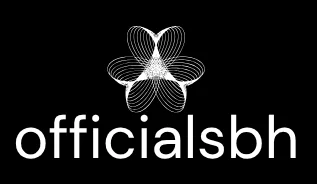In today’s world, managing remote employees can feel like herding cats—if those cats were also juggling flaming torches while trying to balance on a tightrope. With teams spread across different time zones and home offices that double as makeshift coffee shops, keeping everyone aligned is no small feat. But fear not! Mastering remote management isn’t just possible; it can be downright enjoyable.
Table of Contents
ToggleUnderstanding Remote Work
Remote work refers to performing job duties outside of a traditional office setting. It often involves using technology to communicate and collaborate. Teams might spread across various locations, creating unique dynamics and challenges. Establishing effective communication channels remains vital for success in remote environments.
Managing remote employees includes navigating time zone differences. Coordinating meetings or deadlines can lead to misunderstandings if not handled carefully. Teams should establish clear schedules that accommodate everyone’s availability. This approach promotes inclusivity and helps maintain productivity.
Building a strong company culture requires intentional effort, especially in remote settings. Virtual gatherings, team-building activities, and regular check-ins foster relationships among remote workers. Recognizing individual contributions reinforces motivation and engagement.
Tools that facilitate project management play a crucial role in remote work environments. Using platforms like Trello or Asana helps track tasks and deadlines. Regularly updating progress ensures everyone stays aligned with goals.
Monitoring employee performance becomes essential as physical oversight disappears. Creating key performance indicators enables managers to evaluate productivity fairly. Focus on outcome-based evaluations rather than hours worked enhances accountability among remote employees.
Flexibility often leads to improved job satisfaction. Remote workers tend to appreciate the autonomy of choosing work hours. Companies that promote work-life balance can expect lower turnover rates and higher employee morale.
Understanding the complexities of remote work empowers managers to enhance team effectiveness. Adopting these strategies enables effective management of remote employees and ultimately drives organizational success.
Strategies to Manage Remote Employees

Managing remote employees requires intentional strategies to ensure efficiency and engagement. Effective communication and goal-setting stand out as key components in promoting productivity within remote teams.
Establish Clear Communication
Effective communication forms the backbone of remote management. Implementing regular check-ins keeps everyone aligned and focused on their tasks. Using various tools like Slack or Zoom enhances collaboration, allowing team members to connect easily. Encouraging an open-door policy fosters transparency and trust, making it easier for employees to share concerns. Utilizing recorded meetings ensures that those in different time zones stay informed without feeling left out.
Set Goals and Expectations
Setting clear goals enables employees to understand their responsibilities. Establishing specific, measurable, achievable, relevant, and time-bound (SMART) objectives helps each team member focus on what’s important. Regularly reviewing these goals allows for course adjustments based on project needs. Communicating expectations clearly minimizes misunderstandings and aligns team efforts toward common outcomes. Sharing deadlines and milestones keeps everyone motivated and accountable for their tasks, driving overall team productivity.
Tools and Technologies for Remote Management
Managing remote employees effectively hinges on the right tools and technologies. Utilizing specific platforms enhances productivity and collaboration, making it easier to navigate virtual work environments.
Project Management Tools
Project management tools play a pivotal role in remote settings. Tools like Trello, Asana, and Monday.com offer features for tracking tasks, deadlines, and progress. Teams can create boards, assign tasks, and set due dates to maintain alignment with project goals. Visual updates keep everyone informed about project status. These platforms often integrate with other software, promoting seamless collaboration across various tools and departments. Many managers also appreciate automation features, which reduce repetitive tasks and free up time for critical project elements.
Communication Platforms
Communication platforms are essential for maintaining team connection. Slack and Microsoft Teams streamline messaging, file sharing, and video calls, enabling real-time collaboration. These tools support various channels, letting teams organize conversations based on projects or subjects. Video conferencing tools like Zoom or Google Meet facilitate face-to-face interactions, which are crucial for relationship building. Time zone management features help schedule meetings, ensuring participation from all team members. Consistent communication through these platforms fosters transparency and strengthens trust among remote employees.
Building Team Culture Remotely
Creating a vibrant team culture in remote settings involves intentional actions. Engaging employees through regular activities strengthens bonds and enhances morale.
Organizing Virtual Team-Building Activities
Team-building activities help create connections among remote employees. Options include online quizzes, virtual escape rooms, or collaborative challenges tailored to team interests. Schedule these events quarterly or monthly for consistency. Hosting friendly competitions fosters a light-hearted environment, encouraging collaboration and boosting camaraderie. Consider using breakout rooms to facilitate smaller group discussions for deeper interaction. Additionally, involving team members in planning ensures activities resonate with everyone. Regular virtual gatherings cultivate relationships that translate into better teamwork on projects.
Fostering an Inclusive Environment
Inclusion remains essential for effective remote teams. Employees ought to feel valued regardless of location or background. Regular check-ins promote dialogue, giving team members a platform to share their ideas or concerns. Utilizing anonymous feedback tools helps gather insights, ensuring every voice matters. Celebrate diverse cultural holidays and achievements to acknowledge various backgrounds. Providing mentorship opportunities also fosters inclusion, promoting collaboration among different levels of experience. Create a shared digital space for resources and knowledge, allowing everyone to contribute and learn from one another.
Monitoring Performance and Productivity
Monitoring employee performance in remote settings requires specific strategies. Establishing key performance indicators (KPIs) promotes clear expectations based on results rather than hours logged. Fair evaluations stem from this focus on outcomes.
Utilizing digital tools makes tracking productivity straightforward. Software like Trello or Asana provides visual task management that enhances transparency. These platforms allow managers to view project progress easily and adjust assignments as necessary.
Regular one-on-one check-ins support open lines of communication. Frequent discussions about workloads and challenges encourage team members to voice concerns. Video calls, facilitated by Zoom or Google Meet, offer personal connection, strengthening relationships.
Additionally, leveraging analytics tools offers insights into team dynamics. Platforms like Hubstaff or Time Doctor track time spent on tasks, providing data for informed decision-making. Understanding individual contributions informs adjustments to workflows.
Employees appreciate having flexible schedules as they adapt to personal obligations. Prioritizing work-life balance contributes to higher morale and job satisfaction. Remote workers often perform better with the freedom to manage their time effectively.
Creating a culture of accountability enhances peer motivation. Regular updates on team goals encourage collective progress. Sharing milestones fosters a sense of accomplishment and reinforces collaboration among team members.
Finally, celebrating successes and recognizing exceptional contributions builds enthusiasm. Acknowledgment can happen during team meetings or through company-wide communications. Highlighting achievements fosters a positive remote environment where employees feel valued and motivated.
Managing remote employees presents unique challenges but also offers opportunities for growth and innovation. By embracing effective communication and leveraging the right tools, teams can thrive in a virtual environment. Building a strong company culture requires intentional efforts that foster collaboration and inclusivity.
Employers who prioritize flexibility and accountability will likely see improved morale and productivity among their remote workforce. Regular check-ins and goal-setting promote alignment and motivation. Ultimately, understanding the nuances of remote management not only enhances team effectiveness but also drives overall organizational success. Embracing these strategies will pave the way for a more cohesive and engaged remote team.



